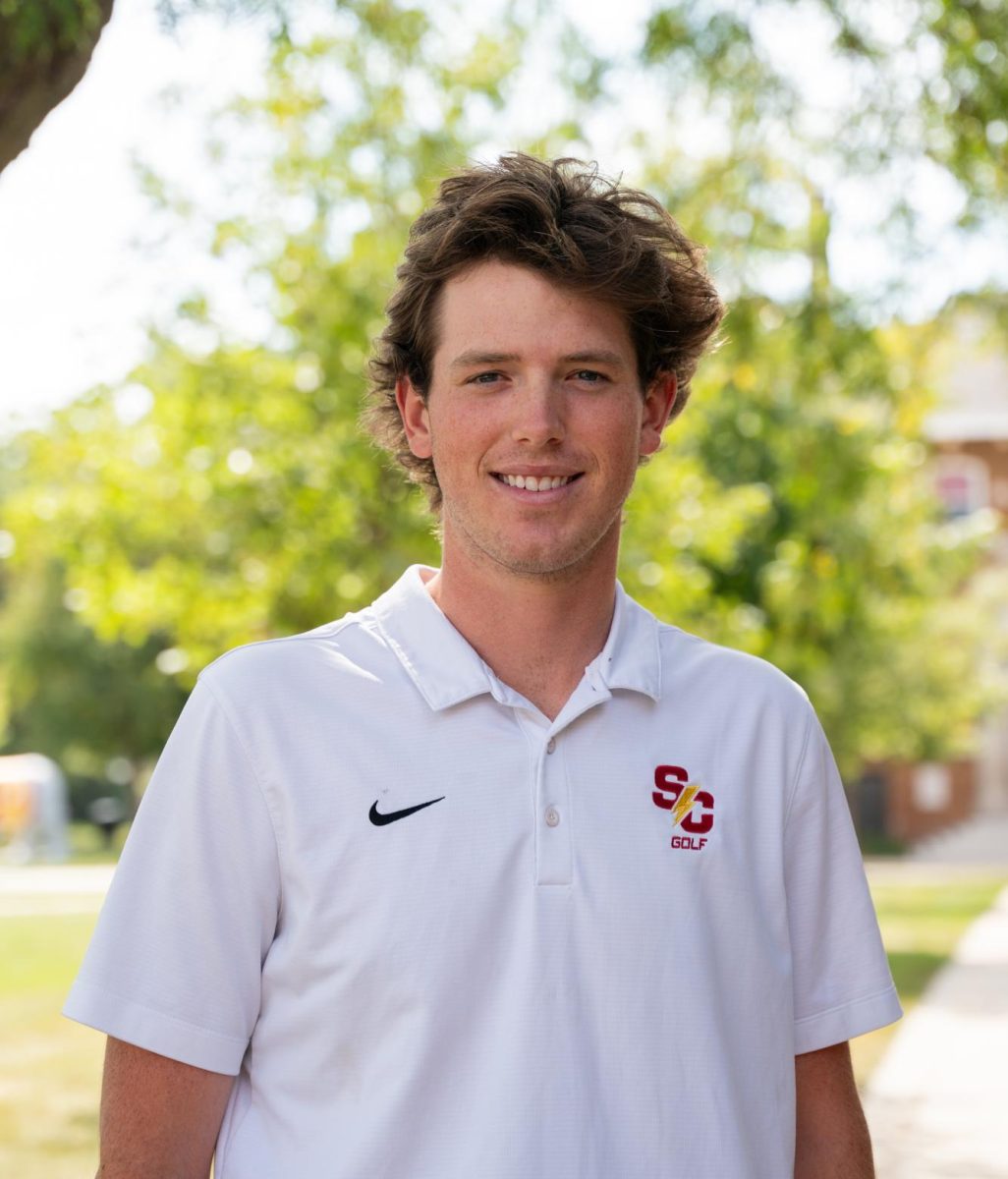Faculty mothers share stories of child rearing in academia

March 20, 2003
This story is the second part of a three-part series celebrating Women’s History Month. The Simpsonian has decided to look at women’s history with a new spin: the history that women are creating each day. By looking at issues that Simpson women are currently encountering and then looking at the broader gender issues that surround us, The Simpsonian hopes to highlight the ways that women are transcending the past, by embracing the world on their own terms. In short, we want to let the community know that women are making a difference-at Simpson and around the world.
Pat Singer gave birth to her first child the summer after her first year as a faculty member at Simpson College. When she returned that fall, she was met with an atmosphere that was not only lacking in support, but also in equality.
“I was told by the dean [not the current dean] that I was not to miss classes because of my children for any reason,” said Singer, professor and chair of the biology department. “At the same time, a male faculty member became a father and he wasn’t given any kind of lecture.”
Singer didn’t miss a single class for any reason connected with her children until last year-when her 19-year-old son had an appendectomy.
The experience was described as “liberating” by Singer, who feels that the current administration has created a more conducive atmosphere for faculty parents.
“I was told by a colleague, who left campus everyday to eat lunch, that I couldn’t leave the campus to breast feed my children,” said Singer. “I was also repeatedly urged by another colleague to quit my job here.”
Her story is not unlike those told by most female professors or scholars around the country who have chosen to combine a life of academics with raising children.
Singer arrived in 1982 and was, at the time, the only woman in the sciences to have small children.
Nancy St. Clair, professor and chair of the English department, arrived just seven years later in 1989 with two daughters (ages five and one) and found a much more supportive campus. While St. Clair said she did not feel pressure from the community, she remembered feeling pulled in many very different directions.
“I remember struggling in the winter to get two young wiggling daughters into snowsuits and boots, trying to make sure that I had bottles, snacks and everything they needed for the day before I dropped them off at day care,” said St. Clair. “Then I would drive to school thinking, ‘oh and by the way, back to thinking about Milton.’ It’s just a very strange kind of multitasking.”
Jackie Brittingham, assistant professor of biology, arrived at Simpson in 1999 with a one-year-old daughter and experienced difficulties as well.
“That first year was really impossible and very stressful,” said Brittingham. “I didn’t have any family or friends here and when my daughter was sick or her baby sitter was sick, I just had to find someone who could watch her for a few hours-missing classes and labs just wasn’t an option.”
Singer and Brittingham both expressed the pressure that they felt as untenured women with children working in the sciences. The necessity of attendance in labs and the lack of ability to make up work outside of class (such as extra reading or writing exercises appropriate for courses in humanities and other areas) makes the situation for women in science especially difficult.
This pressure, both internal and external, frequently leads to women avoiding childbirth during the academic year and for some female professors to choose to avoid child rearing altogether.
According to Robin Wilson, the author of a June 25 article in The Chronicle of Higher Education entitled “Timing Is Everything: Academe’s Annual Baby Boom,” most women in academics attempt to plan pregnancies or adoptions for early summer. This is so they can benefit from the time out of class to spend with an infant and still continue in the fall with their regular coursework.
Both of Singer’s children were born in June-a plan orchestrated very purposefully to avoid missing work. In addition, Brittingham is expecting the birth of her second child in late May.
Both women felt that having children in the summer provided the best option for both themselves and their colleagues who would be forced to pick up the course load at any other time during the academic year.
“It is not an accident that my due date is May 20 and I am scheduled to teach until May 16,” said Brittingham.
While class scheduling freedom, lengthy vacations and summer breaks seem to provide a great deal of flexibility for faculty parents, intellectual and time commitments to the college community pose unique considerations.
In addition, parental leave at most academic institutions is not paid-a situation that puts single parents and financially restricted couples in crisis, especially when faced with childcare expenses.
Simpson College is required by law to follow the Family and Medical Leave Act of 1993 for all faculty and staff members.
The act states that all employers who employ more than 50 employees must allow 12 weeks of unpaid family or medical leave for those who have been employed for at least one year.
While this is the college’s stated policy in the employee handbook, parental leave is not addressed individually in the faculty handbook.
Brittingham is in the early stages of researching the ways that other institutions deal with family and sick leave policy for faculty.
“This is going to be my last pregnancy and obviously I am not going to be affected by this because I am using the summer for my time with my infant,” said Brittingham. “But I think that it is an important issue for us to look at for the future of this faculty. This issue is one that will affect many current and future young faculty members here.”
Knox College in Galesburg, Ill. has adopted a generous alternative in family leave policy for its faculty. This is a description of just one of the alternative solutions at a similar liberal arts institution in the collection of essays, “The Family Track: Keeping your faculties while you mentor, nurture, teach and serve” published by the University of Illinois Press Urbana and Chicago.
The policy treats the physical conditions related to childbirth similar to any other kind of medical need and therefore awards six weeks childbirth leave at full pay for a “normal childbirth” and more if it is essential.
In addition, the policy allows for parental leave that is intended for parents to focus on a new child and make accommodations in the shift for both children and careers. Parental leave is available for all parents including adoptive mothers or fathers, as well as birth mothers or fathers who are primary caregivers.
The parental leave can be combined with childbirth leave for a one full term leave, as ten weeks of half-time leave or as five weeks full time leave with pay and five weeks leave without pay.
Brittingham hopes to use her preliminary research in order to begin a dialogue among faculty, staff and administration about developing an official policy for faculty. She also hopes that the discussion about on-site childcare for the campus, which was originated by the President’s Commission on the Status of Women during the 1998-99 academic year, will resume.
“I think that the focus on parental leave and childcare options after the arrival of a new child is really essential,” said Brittingham. “Parents who feel as if they are neglecting their duties as parents do not make good teachers. I have to be a good mother in order to be an effective teacher.”





